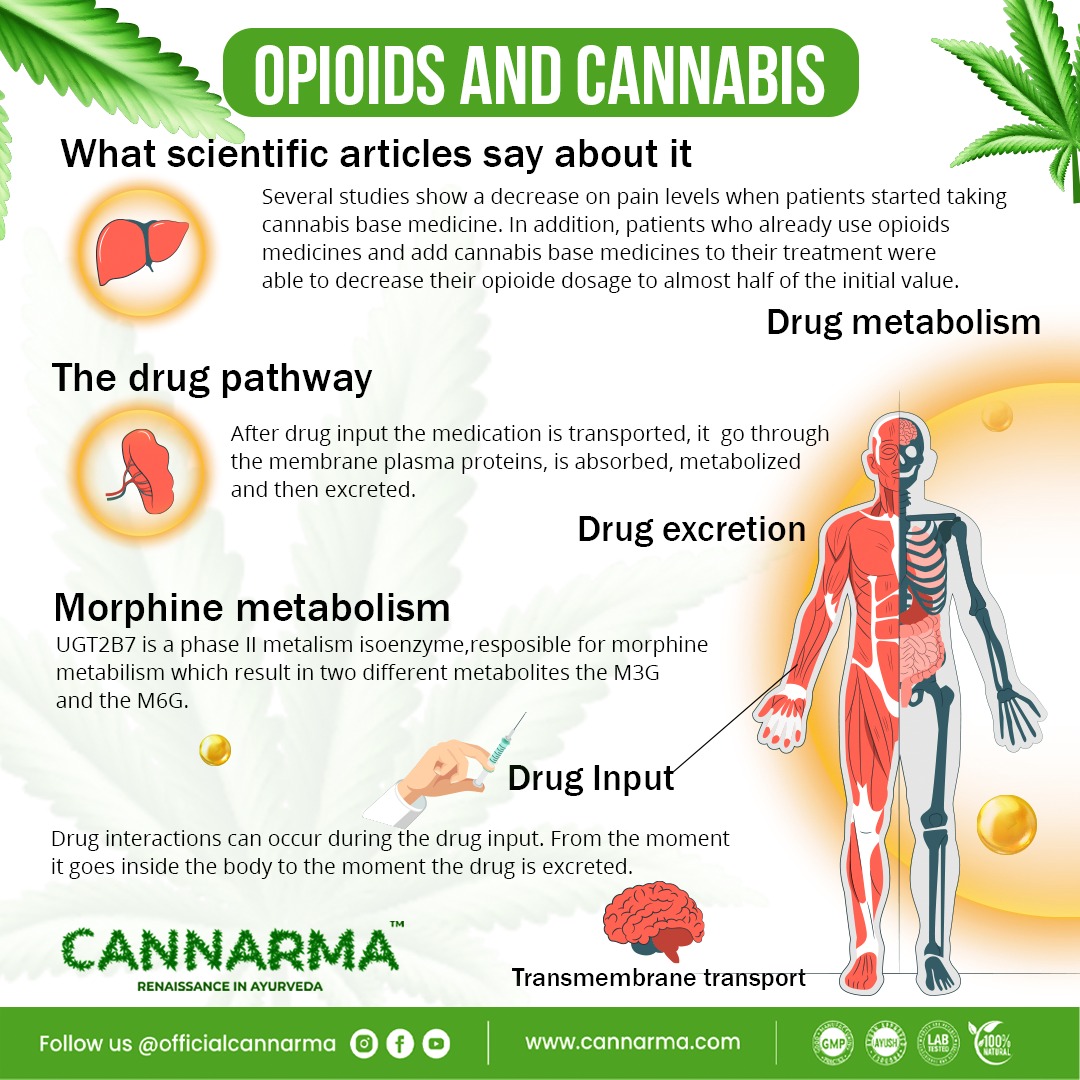Opioids and Cannabis: A Review of the Scientific Studies
Opioids and cannabis are two substances that have contributed significantly to the field of medicine and research because of their potential therapeutic effects. In this article, we will review some of the scientific studies exploring the relationship between opioids and cannabis, focusing on their interactions and potential benefits.
Pain management:
Opioids have long been used as potent analgesics for the management of acute and long-term pain. However, their use is associated with various side effects, including tolerance, dependence, and overdose risk.
Several studies have been conducted to investigate the potential of cannabis and its components, such as cannabinoids, in pain management. Research shows that cannabinoids, especially delta-9-tetrahydrocannabinol (THC) and cannabidiol (CBD), have analgesic properties and may also help reduce pain associated with conditions such as neuropathy, cancer, and multiple sclerosis . Some studies have also found possible synergistic effects of combining opioids and cannabinoids, suggesting that cannabis potentiates the analgesic effects of opioids, which may lead to lower opioid doses and decreased adverse effects.
Opioid Addiction and Withdrawal:
Opioid addiction and its associated withdrawal symptoms pose significant challenges in health care. It is important to find effective treatment to manage addiction and reduce withdrawal symptoms.
Emerging research suggests that certain cannabinoids, particularly CBD, may have the potential to manage opioid addiction. Studies have shown that CBD modulates the brain’s reward system and reduces drug-seeking behavior in preclinical models of opioid addiction. Additionally, CBD has been investigated for its ability to reduce symptoms of opioid withdrawal such as anxiety, craving and physical discomfort.
Loss Reduction Strategies:
Harm reduction strategies aim to reduce the negative consequences of drug use. In the context of opioids, harm reduction approaches include interventions such as naloxone delivery (an opioid overdose reversal agent) and supervised consumption sites.
Some research has explored the role of cannabis in harm reduction strategies. Studies have shown that cannabis use is associated with reduced opioid overdose mortality in some populations. This correlation has sparked discussion about the potential use of cannabis as an adjunct therapy in the prevention of opioid overdose.
Safety and Adverse Effects:
Understanding the safety profile and potential adverse effects of opioids and cannabis is important for healthcare providers and patients.
Opioids are known to have a risk of respiratory depression, sedation, constipation, and dependence. On the other hand, cannabis causes short-term cognitive impairment, psychoactive effects, and potential interactions with other drugs.
It is essential to consider the individual patient’s characteristics, medical history, and specific needs when determining the appropriateness of opioid and cannabis use, as well as potential interactions or contraindications.
Legal and regulatory considerations:
The legal and regulatory landscape surrounding opioids and cannabis varies among different jurisdictions. While opioids are often available by prescription for medical use, cannabis regulations vary widely, ranging from complete prohibition to medical and recreational legalization.
It is essential for patients to stay informed about the legal and regulatory framework in their respective jurisdictions, as well as adhere to evidence-based guidelines and best practices.
It is important to note that more research is needed to fully understand the complexities of the interactions between opioids and cannabis. The studies reviewed here provide valuable insight into the potential benefits and considerations associated with their use, but individual patient factors and medical supervision must always guide treatment decisions.



